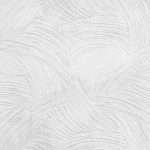What is the Difference Between a Cocoon and a Cacoon?
Have you ever wondered what the difference is between a cocoon and a cacoon? While the two terms are often used interchangeably, there are some key differences between the two.
A cocoon is a protective covering made of silk, usually by a caterpillar or moth, which is used as a form of protection during the pupal stage of metamorphosis. Cocooning is the process of spinning and weaving the protective silk covering. Cocoons are typically found attached to trees, branches, leaves, or walls, and serve as a safe place for the insect to develop into its adult form.
A cacoon, on the other hand, is a protective covering made of woven natural fibers, typically cotton or wool. Unlike a cocoon, a cacoon is not made by an insect, but rather is crafted by humans. Cacooning is a type of primitive weaving technique that is used to create a variety of protective coverings for humans. Cacooning has been a part of human culture for centuries, and is still used today in some parts of the world.
The most obvious difference between a cocoon and a cacoon is the type of material used to make them. Cocoons are created from silk, while cacoon are created from natural fibers. Additionally, cocoons are made by insects, while cacoon are made by humans.
Overall, both cocoons and cacoon provide a safe and protective environment for the creature that is using them. Cocoons are used by insects to protect them during the pupal stage of metamorphosis, while cacoon are used by humans to protect them from the elements and provide a private space.What is the Difference Between a Cocoon and a Cacoon?
Have you ever wondered what the difference is between a cocoon and a cacoon? While the two terms are often used interchangeably, there are some key differences between the two.
A cocoon is a protective covering made of silk, usually by a caterpillar or moth, which is used as a form of protection during the pupal stage of metamorphosis. Cocooning is the process of spinning and weaving the protective silk covering. Cocoons are typically found attached to trees, branches, leaves, or walls, and serve as a safe place for the insect to develop into its adult form.
A cacoon, on the other hand, is a protective covering made of woven natural fibers, typically cotton or wool. Unlike a cocoon, a cacoon is not made by an insect, but rather is crafted by humans. Cacooning is a type of primitive weaving technique that is used to create a variety of protective coverings for humans. Cacooning has been a part of human culture for centuries, and is still used today in some parts of the world.
The most obvious difference between a cocoon and a cacoon is the type of material used to make them. Cocoons are created from silk, while cacoon are created from natural fibers. Additionally, cocoons are made by insects, while cacoon are made by humans.
Overall, both cocoons and cacoon provide a safe and protective environment for the creature that is using them. Cocoons are used by insects to protect them during the pupal stage of metamorphosis, while cacoon are used by humans to protect them from the elements and provide a private space.What is the Difference Between a Cocoon and a Cacoon?
Have you ever wondered what the difference is between a cocoon and a cacoon? While the two terms are often used interchangeably, there are some key differences between the two.
A cocoon is a protective covering made of silk, usually by a caterpillar or moth, which is used as a form of protection during the pupal stage of metamorphosis. Cocooning is the process of spinning and weaving the protective silk covering. Cocoons are typically found attached to trees, branches, leaves, or walls, and serve as a safe place for the insect to develop into its adult form.
A cacoon, on the other hand, is a protective covering made of woven natural fibers, typically cotton or wool. Unlike a cocoon, a cacoon is not made by an insect, but rather is crafted by humans. Cacooning is a type of primitive weaving technique that is used to create a variety of protective coverings for humans. Cacooning has been a part of human culture for centuries, and is still used today in some parts of the world.
The most obvious difference between a cocoon and a cacoon is the type of material used to make them. Cocoons are created from silk, while cacoon are created from natural fibers. Additionally, cocoons are made by insects, while cacoon are made by humans.
Overall, both cocoons and cacoon provide a safe and protective environment for the creature that is using them. Cocoons are used by insects to protect them during the pupal stage of metamorphosis, while cacoon are used by humans to protect them from the elements and provide a private space.What is the Difference Between a Cocoon and a Cacoon?
Have you ever wondered what the difference is between a cocoon and a cacoon? While the two terms are often used interchangeably, there are some key differences between the two.
A cocoon is a protective covering made of silk, usually by a caterpillar or moth, which is used as a form of protection during the pupal stage of metamorphosis. Cocooning is the process of spinning and weaving the protective silk covering. Cocoons are typically found attached to trees, branches, leaves, or walls, and serve as a safe place for the insect to develop into its adult form.
A cacoon, on the other hand, is a protective covering made of woven natural fibers, typically cotton or wool. Unlike a cocoon, a cacoon is not made by an insect, but rather is crafted by humans. Cacooning is a type of primitive weaving technique that is used to create a variety of protective coverings for humans. Cacooning has been a part of human culture for centuries, and is still used today in some parts of the world.
The most obvious difference between a cocoon and a cacoon is the type of material used to make them. Cocoons are created from silk, while cacoon are created from natural fibers. Additionally, cocoons are made by insects, while cacoon are made by humans.
Overall, both cocoons and cacoon provide a safe and protective environment for the creature that is using them. Cocoons are used by insects to protect them during the pupal stage of metamorphosis, while cacoon are used by humans to protect them from the elements and provide a private space.


